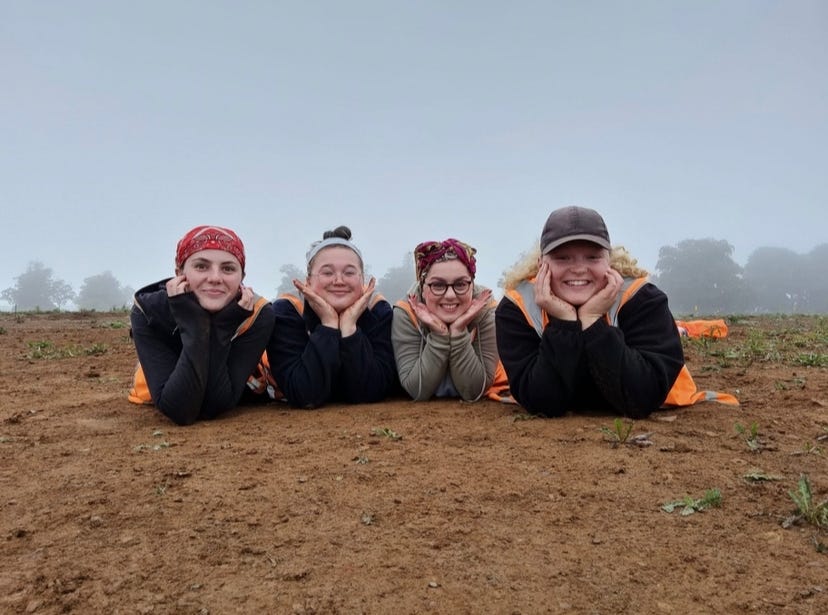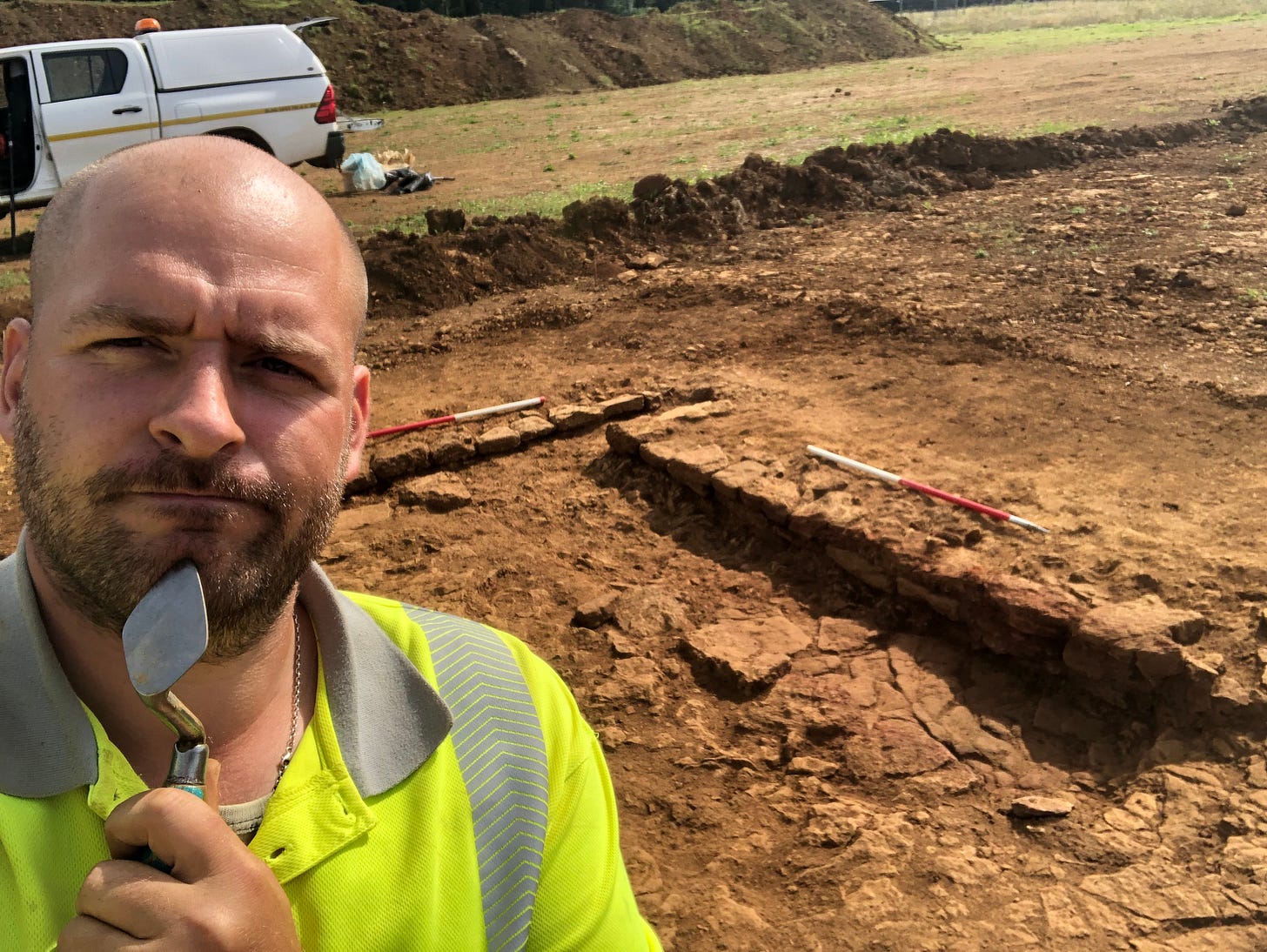Typically, when I’m on a rural archaeology site (where I usually am), there aren’t a lot of structural remains. There are big ditches, little ditches and ring shaped ditches— which we can figure out are ‘fences’, ‘drains’ and ‘houses’, but there isn’t a lot of masonry left behind. And when there IS masonry left behind, I’ve found there to be an overload. So basically, it’s a spectrum for buildings, and what I’ve typically come across is either no building… or a Roman Villa. So what kind of buildings were in Northampton?
Northampton is in the centre of England, surrounded by farmers fields, nature reserves, and home to a massive Carlsberg Brewery. Zooming into the Eastern side of Northampton, the site had both Iron-Age and Romano-British activity, which I helped uncover in 2021. Although I like Iron Age stuff, lets focus on the Romano-British this time.
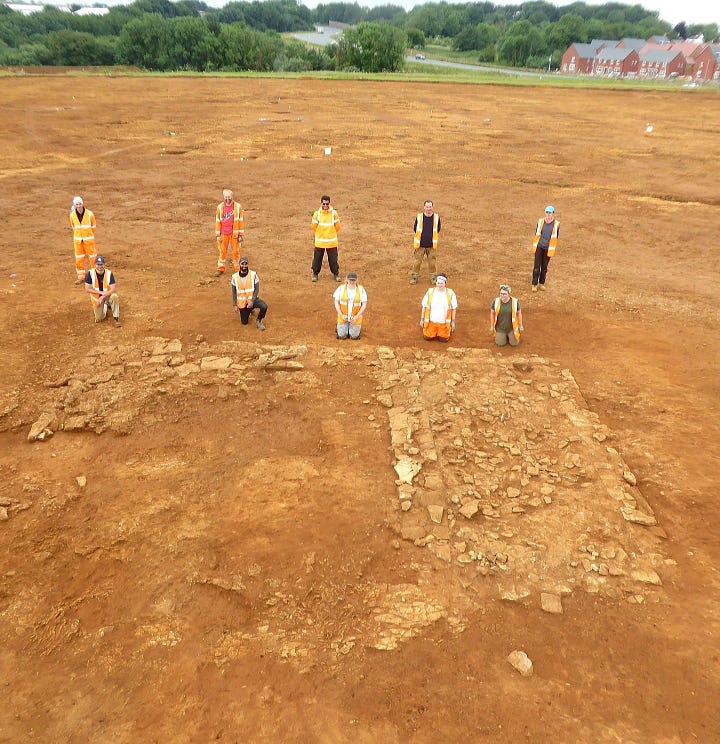
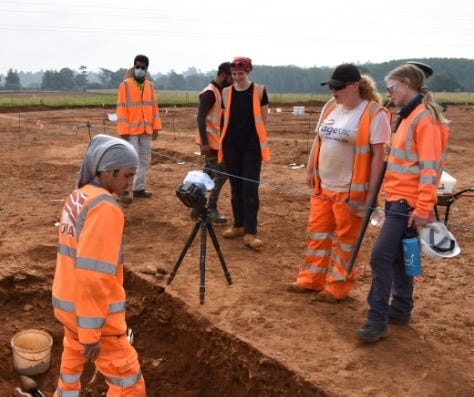
The Dig Site: If we split the site into A, B, and C, part A contained a cellar-type building with coloured plaster and animal bones (see unexcavated above), and parts B and C were split in half by a bubbling spring, one that was definitely being utilised during the Roman period. What for? WELL. Part C had quite a few malting ovens (also known as corn dryers), key to drying and germinating grain to convert it into malt - KEY for beer. Were people in Northamptonshire… always into beer?
Digging Deeper: The site was a fabulous one. Not just because of the masonry and cool finds. It was mainly because of the people. These four girls pictured are four of the kindest, most fun, most BRILLIANT, human beings I know. And the fact that they’re archaeologists?? Absolute bonus.
This was their first site - a training site for them. And it was my first site I helped lead — so it was important for all of us. Everyone was patient and willing to help each other out, and I have the fondest memories of sprinting in from the rain, doing photoshoots during our breaks and taking polaroids to hang up in the cabin.
Top Finds: Well obviously, the malting ovens were a massive find. We found quite a few around the site, and with the natural spring, one theory to site is that it was a brewing zone. Something interesting about the ovens is that they weren’t tossed together, they were carefully designed. Look at this one! Herringbone designs laid into the walls - that would have taken time, effort, and careful planning. Fancy brewers!
We also found a cat skeleton (see photo of Téa below excavating) in one of the ovens, all curled up near the warmest part of the oven. A theory for that is the cat was nearing the end of its life and wanted a cozy place to finish their days, something that’s been seen on other sites before.
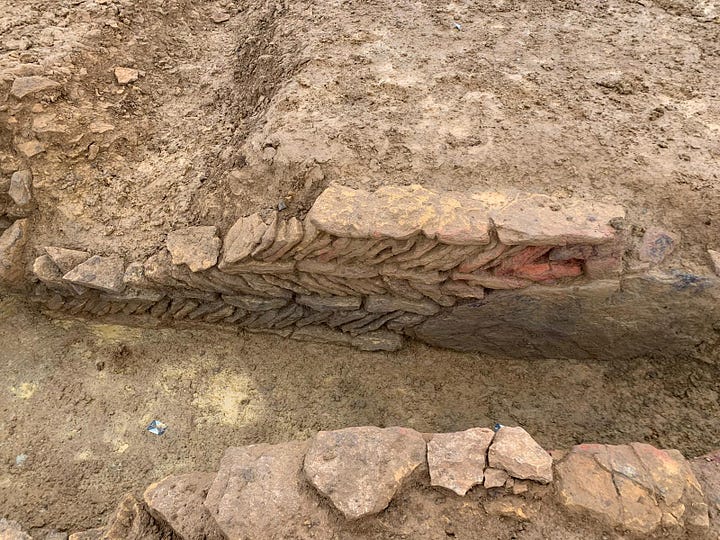
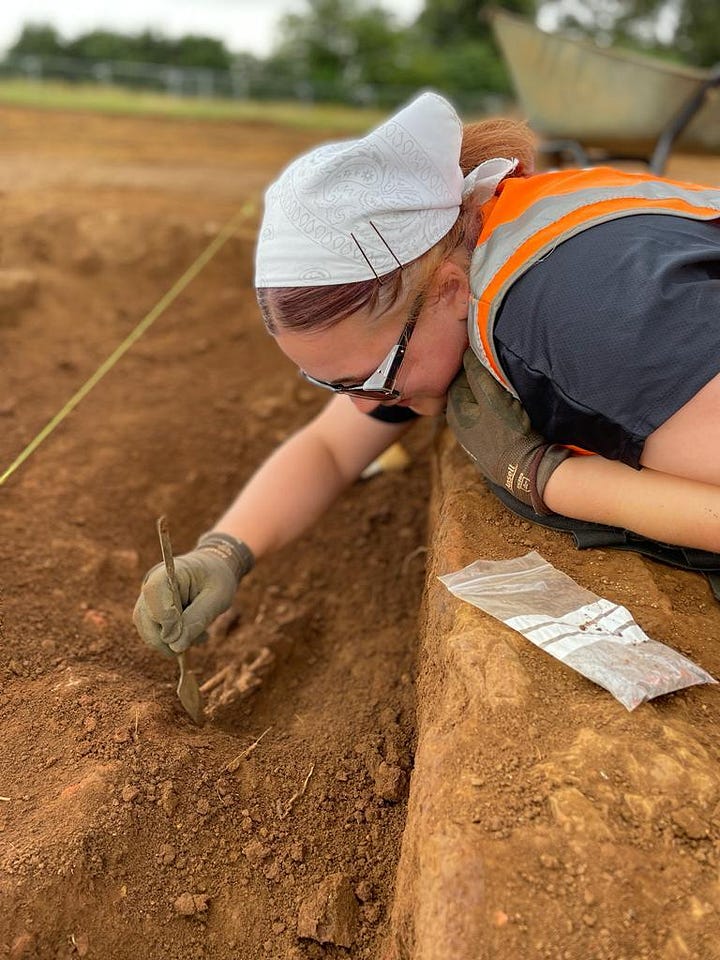
Dig Grub: Our incredible site dynamic was down to a very conducive, work hard - play hard, effort. Which meant that every Friday, WITHOUT FAIL, was “Fat Bastard Friday”. As the assistant supervisor on the site, it was my job on a Friday morning to go to everyone and collect money and a food order. The PO would call it in and I would leave precisely at 1:00PM to collect our fish and chips. Then we’d all sit around the cabin, unwrapping our greasy paper and guzzling down delicious hot food in our half hour break. And every once in a while, for a bit of variety, it was a pizza day. Whenever archaeologists look back on sites and sigh “those were the days”… THOSE were the days.
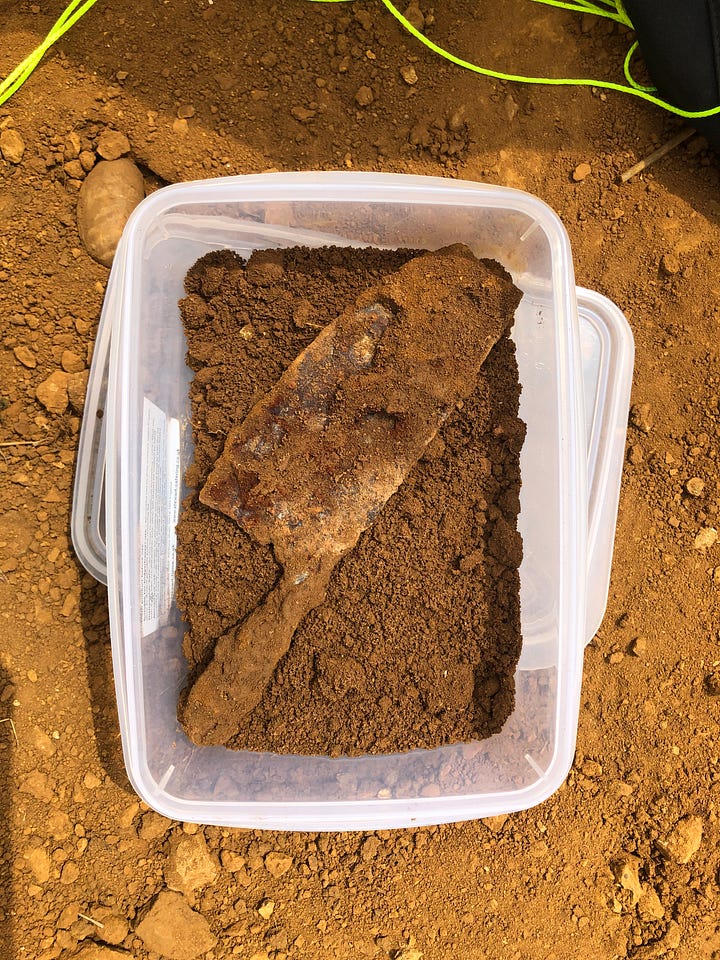
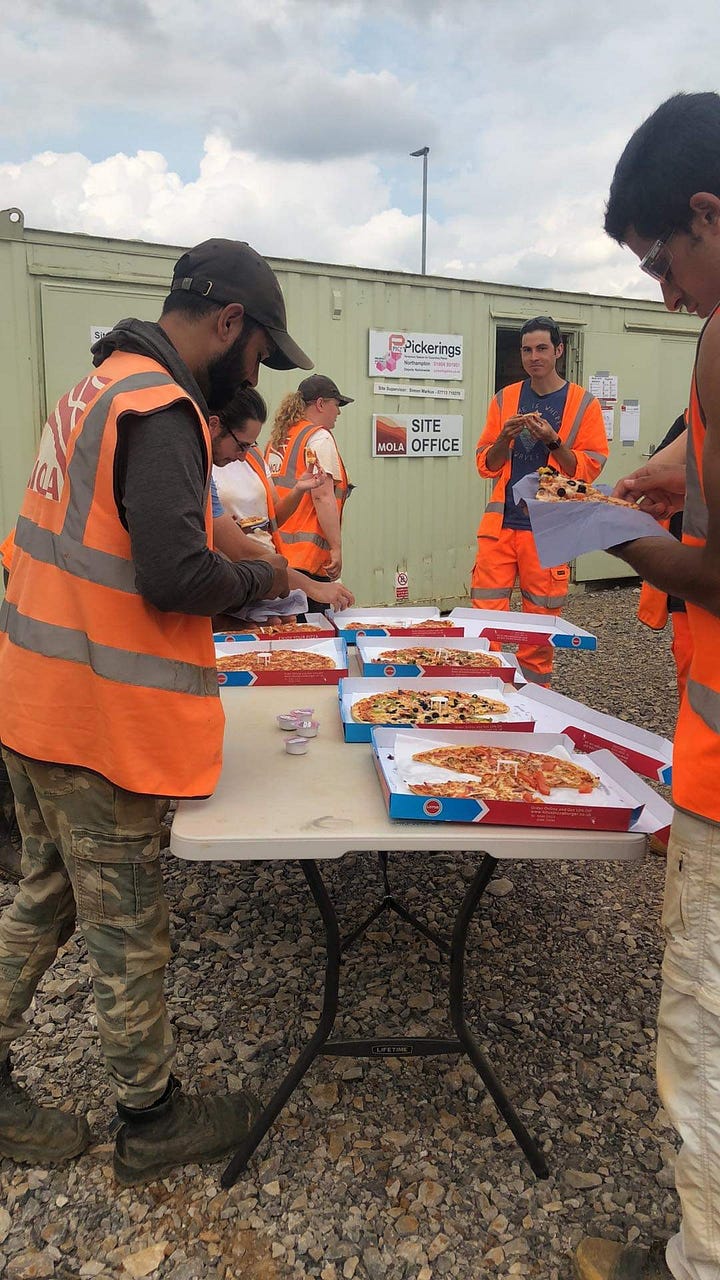
Trowels Down: I know I keep mentioning it, but no site is possible without its people. And this site had incredible archaeology mixed with incredible people. It was a tiny team of the best humans you could put in a room together. We would get drinks after work as a team (you know, for brewery research), convince the Project Officer we deserved special pizza days (and it wasn’t hard), celebrated birthdays with cake, balloons, and flowers, had fish and chips every Friday… that site was like a summer field school every day. Genuinely fun and so often I forgot I was actually paid to be there.
To learn more: Read this BBC article about the site here, or read a similar article from The Past here.




